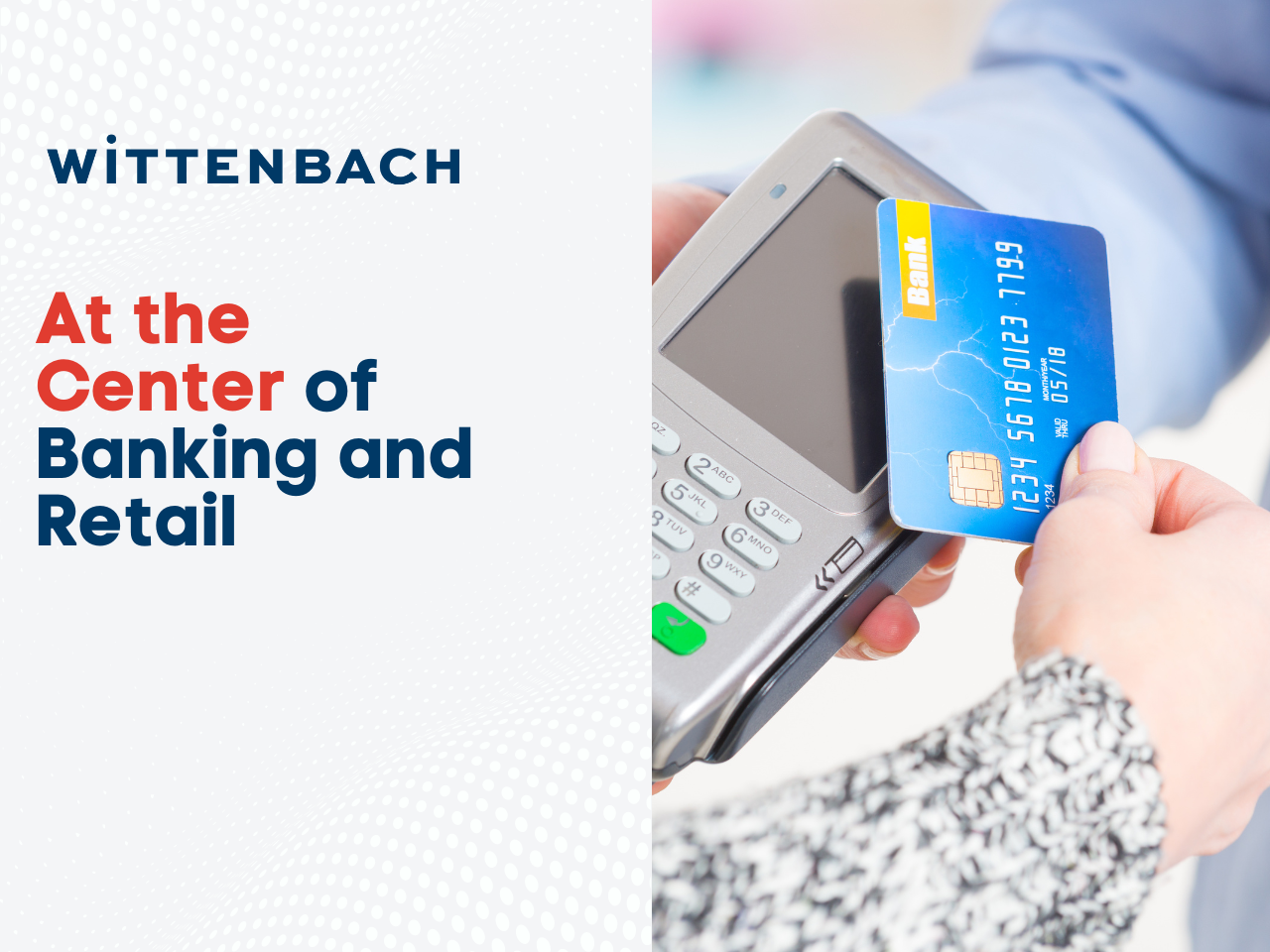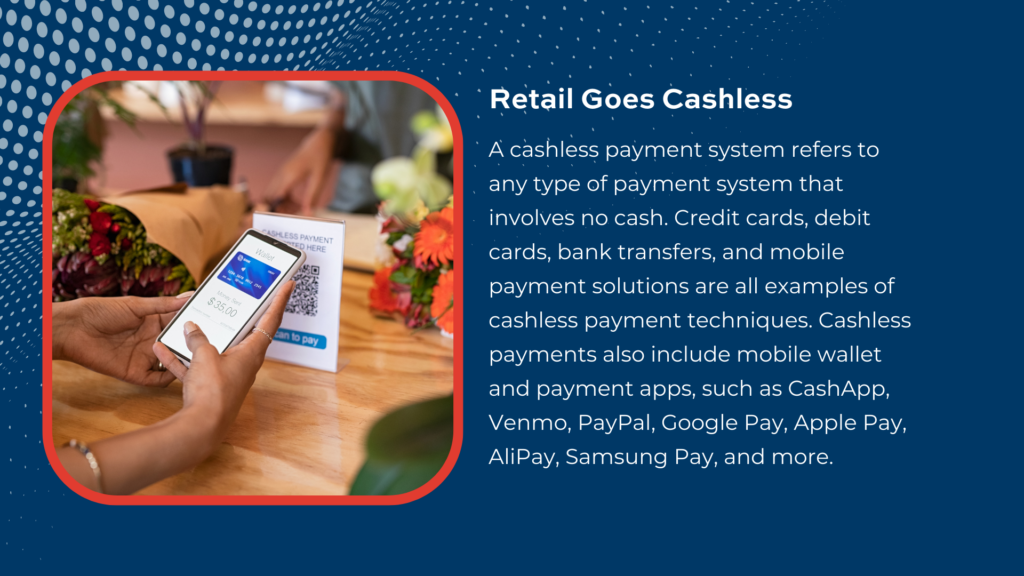Retail payments are evolving. No longer is the question, “Cash or credit?”
Instead, the question is, “Cash, credit, debit, money transfer, digital wallet, or another method of payment?”
The majority of transactions are now cashless transactions. This is especially true of Americans aged 18-45. When surveyed, only 45% of them said they try to have cash on hand, as opposed to 71% of people aged 50+.
This new era of digital transactions has led to an intersection of retail and banking, where retail stores are now taking on more and more cashless payments, blurring the lines between banking and retail. These new digital transactions are at the center of banking and retail. Why is retail going cashless? How is this transition happening?
Retail Goes Cashless
A cashless payment system refers to any type of payment system that involves no cash. Credit cards, debit cards, bank transfers, and mobile payment solutions are all examples of cashless payment techniques. Cashless payments also include mobile wallet and payment apps, such as CashApp, Venmo, PayPal, Google Pay, Apple Pay, AliPay, Samsung Pay, and more.
It is not much of a surprise that more and more retail transactions are going cashless. In fact, roughly 4 out of 10 Americans say that none of their weekly purchases are made using cash. Higher-income earners rely on cash even less.
Consider your own cash use. How often do you typically handle cash in your own life each day or week? Now compare that to the number of times you use a credit or debit card, mobile payment app, or another cashless solution.
Why Retail Is Going Cashless
So why is retail going cashless? There are a multitude of reasons.
While some people may be wary of the technology behind cashless payments, or not understand it, cashless transactions are more secure than cash transactions. Cash transactions are suspect to theft, lost bills or coins, and counterfeit bills. In contrast, cashless transactions provide a digital record of transactions. Retailers can use this data to track inventory, sales numbers, and consumer preferences.
Cashless payments are also much quicker and more accurate, due to the lack of physical handling of money. The risk of errors is reduced due to the lack of human input. Overall, cashless transactions save time for both customers and retailers, benefiting both parties.
Cashless transactions are also safer. Tills with less cash make for less appealing targets for robberies. There is also a lesser need to transfer cash to and from a financial institution, further eliminating risk.
Finally, the biggest reason why more retailers are going cashless is simply because consumers demand it. They desire the convenience of not having to carry excessive cash around and they like the speed of cashless transactions.
While cashless transactions are growing, cash will not be 100% phased out anytime soon (more on that in a moment). In the meantime, how can you keep your cash safe? Machines such as ATMs and cash handlers or recyclers can quickly count money while detecting counterfeit bills.
The Hyosung Innovue MS500 is an industry-leading TCR, or Teller Cash Recycler. It can rapidly count currency, detect counterfeit bills, and keep money secure, all in a compact, upright form.
For a more in-depth guide on its features and functions, check out our blog on TCRs and the Hyosung Innovue MS500.
Not Everyone Is Ready for Cashless Transactions
Not everyone is ready for cashless transactions. Unbanked customers who may not have a debit card, credit card, or bank account, are half as likely to set up nonbank payment options such as PayPal. They may also use payroll cards and government benefit cards.
Retailers should invest in technology that bridges the gap between our current economy and digital-only transactions. One example is cash recyclers, which automate the cash handling process while simultaneously providing security. A TCR or teller cash recycler, is a device that accepts cash deposits, sorts and stores bills, detects counterfeit bills, and dispenses bills. TCRs are faster and more accurate at handling cash than a human, enabling you to handle large amounts of cash every day, without the need to hire additional staff.
To learn more about cash recyclers, check out our post, “What is Cash Recycling?” In it you will learn more about what cash recyclers are and how they work.
Transitioning to a Cashless Future
While many experts speculate we are headed to a “cashless” future, it is going to take time to get there. For the foreseeable future, in fact, cash is not dead. Both financial institutions and banks need to be aware of how consumers are shifting away from cash and towards cashless payments and meet that demand.
In the meantime, cash transactions still need to be supported. Expect more consumers to demand access to ITMs, mobile banking and payment apps, and other solutions that quickly send and receive cash.
How can you support your clients and customers for this digital transformation?
Get the support you need from a proven, trusted partner like Wittenbach. Our ATM, ITM, and hybrid solutions provide safe and secure transactions, including cash deposits and withdrawals, multiple check deposits, check cashing, as well as transfers, and other banking transactions.
Not sure what solution is right for your business or financial institution? We can help. Get in touch and let our experts help you make the best choice for your organization.




